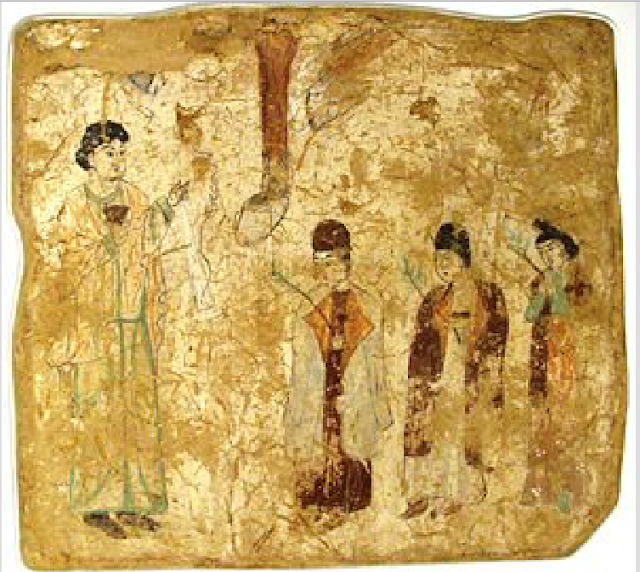Click Here to View the Main Index
"Nestorianism is a Christological doctrine advanced by Nestorius, Patriarch of Constantinople from 428–431. The doctrine, which was informed by Nestorius's studies under Theodore of Mopsuestia at the School of Antioch, emphasizes the disunion between the human and divine natures of Jesus. Nestorius' teachings brought him into conflict with some other prominent church leaders, most notably Cyril of Alexandria, who criticized especially his rejection of the title Theotokos ("Bringer forth of God") for the Virgin Mary. Nestorius and his teachings were eventually condemned as heretical at the First Council of Ephesus in 431 and the Council of Chalcedon in 451, leading to the Nestorian Schism in which churches supporting Nestorius broke with the rest of the Christian Church. Afterward many of Nestorius' supporters relocated to Sassanid Persia, where they affiliated with the local Christian community, known as the Church of the East. Over the next decades the Church of the East became increasingly Nestorian in doctrine, leading it to be known alternately as the Nestorian Church."
Click on the map to enlarge
"Following the exodus to Persia, scholars expanded on the teachings of Nestorius and his mentors, particularly after the relocation of the School of Edessa to the Persian city of Nisibis in 489 (where it became known as the School of Nisibis). Nestorianism never again became prominent in the Roman Empire or later Europe, though the spread of the Church of the East in and after the 7th century spread it widely across Asia."
East Asian History Sourcebook: "Ch'ing-Tsing: Nestorian Tablet: Eulogizing the Propagation of the Illustrious Religion in China, with a Preface, composed by a priest of the Syriac ....."In the year of the Greeks one thousand and ninety-two, the Lord Jazedbuzid, Priest and Vicar-episcopal of Cumdan the royal city, son of the enlightened Mailas, Priest of Balkh a city of Turkestan, set up this tablet, whereon is inscribed the Dispensation of our Redeemer, and the preaching of the apostolic missionaries to the King of China."...Charles F. Horne, ed., The Sacred Books and Early Literature of the East, (New York: Parke, Austin, & Lipscomb, 1917), Vol. XII, Medieval China, pp. 381-392.
"Timothy I’s appointment of a bishop for Tibet during the reign of Trisong Detsen,......The best evidence of the involvement of Christian missionaries in early Tibet comes in the letters of Timothy I, who was Patriarch of the Nestorian Church between 780 and 823, overlapping with the reigns of three of Tibet’s great Buddhist emperors, Trisong Detsen, Senaleg and Ralpachen. Timothy I’s letters contain a couple of references to Tibet. In one letter, he lists the lands in which the Trisagion, one of the oldest Christian prayers, is recited. This list includes Tibet. In another letter, Timothy relates that he has recently appointed a metropolitan bishop for the Turks, and is about to do the same for the Tibetans. These references both date to the early 790s, during Trisong Detsen’s reign."....http://earlytibet.com/2007/12/02/christianity-in-early-tibet/
"Nestorian priests in a procession on Palm Sunday, in a 7th- or 8th-century wall painting from a Nestorian church in China."
Uray Géza. ‘Tibet’s Connections with Nestorianism and Manicheism in the 8th–10th Centuries’. In Steinkellner and Tauscher (eds), Contributions on Tibetan Language, History and Culture. Vienna: Arbeitskries für Tibetische und Buddhistische studien Universität Wien.
"The stories of the search for Shambhala began in the mid 1500s at the court of the Indian Mogul Emperor Akbar the Great in Delhi. At his court, Akbar encouraged art and architecture, literature and promoted religious debate across many religions. He gathered not only Hindus and others from his own empire but Christian monks and pilgrims from the west to participate in these discussions.....This priest's successor, Antonio Andrade, being much younger set out on an expedition to locate this place. He found a wealthy kingdom but no Christians. In 1626 Andrade published 'Discovery of Tibet'. It is this work which likely inspired 'Lost Horizon' the 1933 novel by James Hilton.......A visiting Jesuit priest wrote a compilation of the various stories he heard at Akbar's court and organized them into an essay along with a map."
"Antonio Andrade and his successors, were among the first Westerners to cross the Himalayas to explore Tibet. Michael Wood followed Andrade’s extraordinary journey in the PBS series “In Search of Myths and Legends.” In Tibet: The Jesuit Century (Hargrove), the late Philip Caraman, S.J., described the Society’s several attempts in the 17th and 18th centuries to establish a mission in Tibet. Most remarkable was Ippolito Desideri, the last of the Jesuit explorer-missionaries to establish himself there. He settled into a Buddhist monastery, learned Tibetan and studied the sacred Buddhist texts. When Capuchin friars arrived to demand he turn over the mission to them, he was carrying on what today we would call interreligious dialogue with his hosts."....THE NATIONAL CATHOLIC REVIEW ....April 2, 2012 Issue....by Drew Christiansen
"Father António de Andrade (1580 – March 19, 1634) was a Jesuit priest and explorer from Portugal. He entered the Society of Jesus in 1596. From 1600 until his death in 1634 he was engaged in missionary activity in India. Andrade was the first known European to have crossed the Himalayas and reached Tibet, establishing the first Catholic mission on Tibetan soil.....He was one of the Jesuits attached to the court of the Mughal emperor Jahangir, and was head of the Jesuit mission in Agra. In 1624 he left Agra, headed to Delhi where he and the Jesuit brother Manuel Marques joined a group of Hindu pilgrims bound for the temple of Badrinath located in the Northern part of the present-day Indian state of Uttarakhand. Overcoming incredible hardships in the journey, they crossed the Mana pass (5608 meters) to Tibet, the first Europeans known to have done so.....
Email....okarresearch@gmail.com
John Hopkins.....Northern New Mexico….January 2013


No comments:
Post a Comment